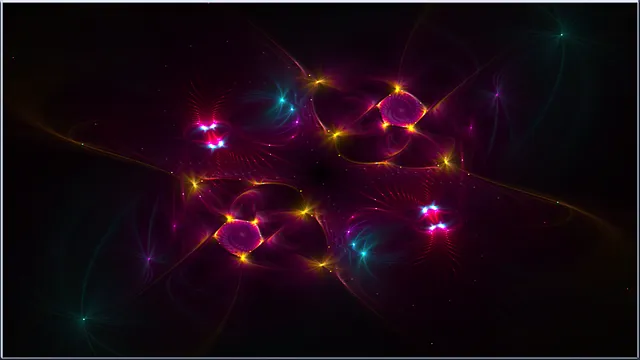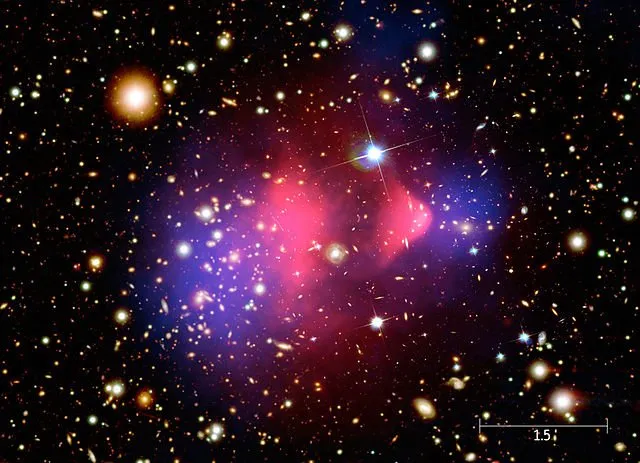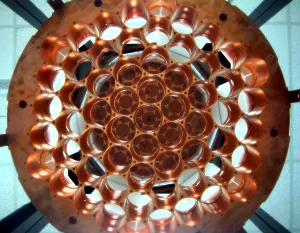After a (well-deserved) break of three weeks, it is time to restart the year with some physics. I discuss today a scientific article that I have recently read, addressing dark matter. By the way, for those interested about the places I visited during my vacation, please check my travel blog @lesmouths-travel which will be updated in the next few days.

[image credits: RedHeadsRule (CC0)]
Although I have already written many times about dark matter, I will today present a novel idea explaining why it has not been directly observed up to now.
The cornerstone here is that dark matter only exists under a form of dark blobs with properties allowing it to escape detection.
But before entering the topic, let me first briefly sketch well-known generalities about dark matter and its potential detection, in order to make this post self-consistent.
DARK MATTER 101
Dark matter is one key concept in particle and astroparticle physics, and for a very good reason. All cosmological data, taken together with the Standard Model of cosmology, points to its existence.
Dark matter was originally introduced by Zwicky in 1930, in a scientific article in which he studied the motion of stars in galaxies.

[image credits: NASA (public domain)]
Taking Newtonian physics (or classical mechanics) alone, the circular motion of the various stars could not be explained.
Putting classical mechanics to the bin is however something that is unwanted (although some try to generalize it), and the alternative solution was to postulate the existence of some invisible matter.
This is exactly what dark matter is: it is invisible and thus dark (and actually very weakly interacting with matter), and it obeys to the laws of gravity like normal matter.
The presence of this extra invisible mass then yields an agreement between theoretical predictions and data.
In the following 80 years, many additional indirect proofs of the existence of dark matter have been unravelled, like the properties of the cosmic microwave background, of large structures in the universe and gravitational lensing, etc.
There is only one caveat. There is a bunch of experiments on Earth trying to directly observe dark matter, and they have all failed so far.
DARK MATTER DIRECT DETECTION
As said above, dark matter is dark (no kidding…) and very weakly interacting with normal matter. This means that it interacts with the visible world (‘very weakly’ is superior to ‘not at all’), so that there are ways to design experiments targeting its direct detection.

[image credits: LUX]
There are many of those experiments. They rely on a huge detector in which one tries to observe the interaction of dark matter with the detector material.
The probability of getting such an interaction is tiny, but it is non zero. Therefore, having a huge detector, recording data during a long time and relying on the fact that there is a constant flow of dark matter going through Earth is sufficient to get the chance to observe something.
In general, dark matter just goes through the detector unperturbed. Once in a while, it however hits an atomic nucleus from the detector material and makes it recoiling. Such a recoil can be observed through the detector electronics, which provides the way to detect dark matter directly.
As no dark matter particle has been observed so far, all models featuring dark particles turn to be more and more constrained. The rate at which dark matter interacts with normal matter has indeed to be small enough to guarantee the non-observation of any signal in the numerous direct detection experiments.
But the idea of dark matter is still far from being excluded by data. Dark matter can after all just be more bizarre than initially thought of.
DARK BLOBS AS DARK MATTER
For instance, one cool idea could be that instead of having a large density of point-like dark matter particles pervading our universe, dark matter could exist under the form of a small density of large composite blobs.

[image credits: Maxwell Hamilton (CC BY 2.0)]
Theoretically, this can be easily designed by enforcing dark matter to self-interact very strongly, which guarantees it to form composite state.
This may seem to contradict what I said above about dark matter being very weakly interacting, but dark matter must only be weakly interacting with normal matter.
Nothing was said concerning its self-interactions.
There exist experimental constraints on such an option, but those can be easily evaded when dark matter coalesces to form very large composite states known as dark blobs. And since those guys are large, one does not need many of them to accommodate the observed density of dark matter.
Moreover, provided the typical mass of the dark blobs is smaller than 1000 tons, the dark matter density is such that at least one blob passes through Earth each year. There are thus ways to detect it.
Again, dark and normal matter are very weakly interacting with each other. But we have here a huge blob of dark matter and a huge detector made of normal matter. It is thus very likely at at least some of their respective constituents will interact with each other.
In the scientific article I am talking about, the authors have shown that such interactions can be detected by current and planned experiments. We have thus means to discover dark matter if it exists under the form of blobs.
As there is no sign of a dark blob today, this class of model is already constrained by data, but it is at the same time far from being fully excluded. The future will hopefully tell us more about this.
TAKE-HOME MESSAGE
Dark matter is still one of the best idea to explain cosmological data. All the proofs we have today are however indirect, and we are missing a direct observation of dark matter. In this recent article, the fact that dark matter has not been directly observed has been connected to non-conventional properties.
In addition of being very weakly interacting with the normal world, dark matter was assumed to be very strongly interacting with itself. As a consequence, it exists under the form of a small density of dark blobs. Such blobs can in principle regularly pass through Earth, and the nice feature is that current and future experiments have a potential to observe them.
If the future is dark, it is thus very exciting and potentially blobby!
STEEMSTEM
SteemSTEM is a community-driven project that now runs on Steem for almost 2 years. We seek to build a community of science lovers and to make Steem a better place for Science Technology Engineering and Mathematics (STEM). In particular, we are now actively working in developing a science communication platform on Steem.
More information can be found on the @steemstem blog, on our discord server and in our last project report.